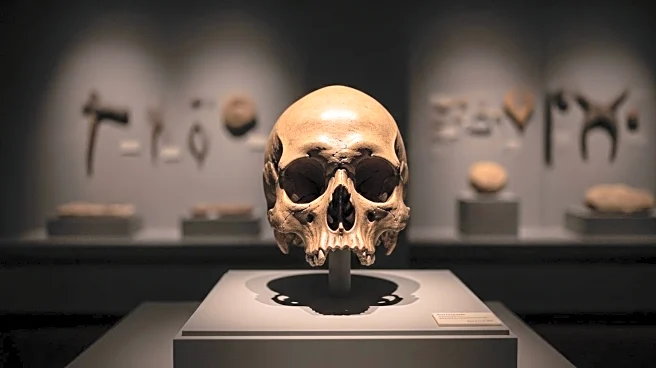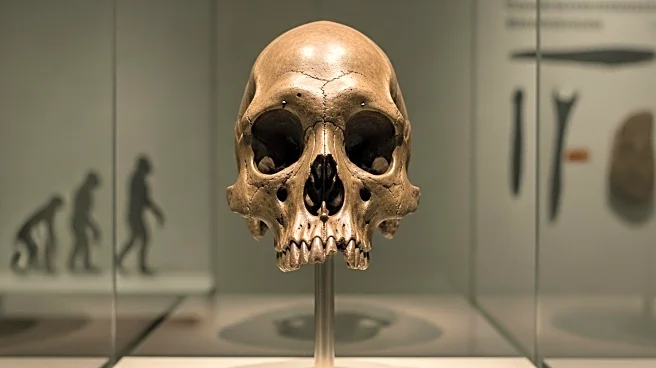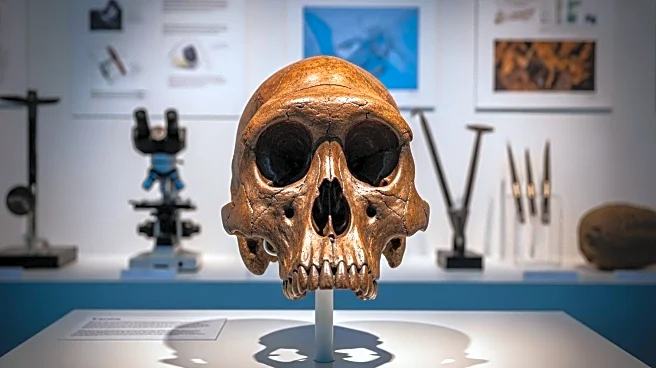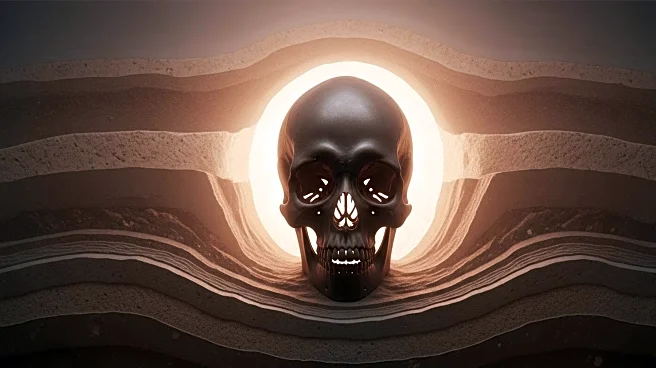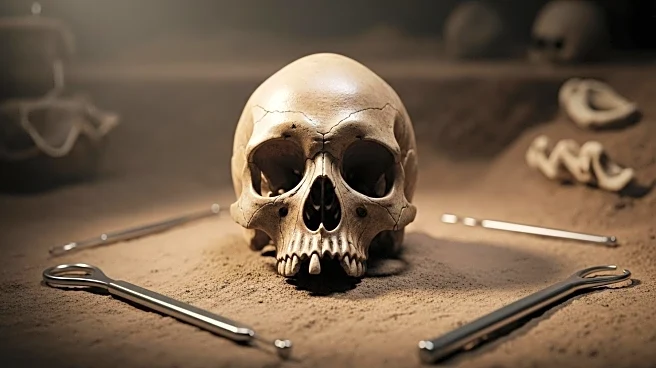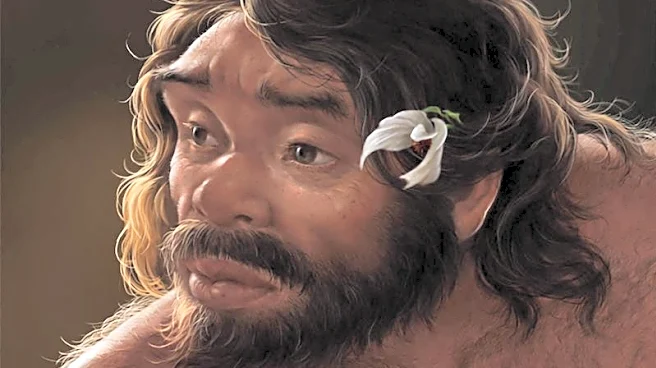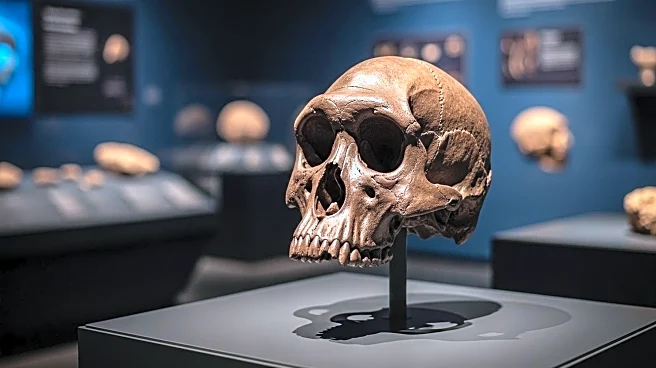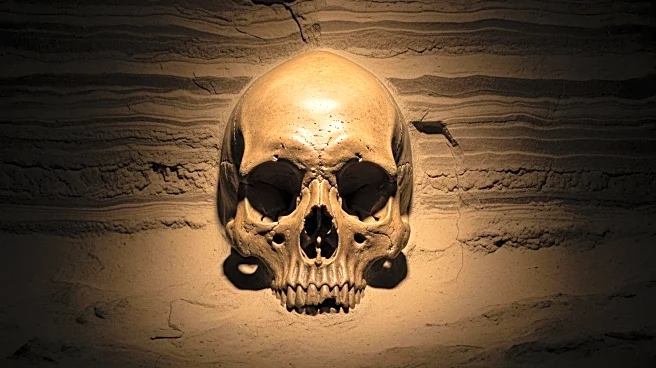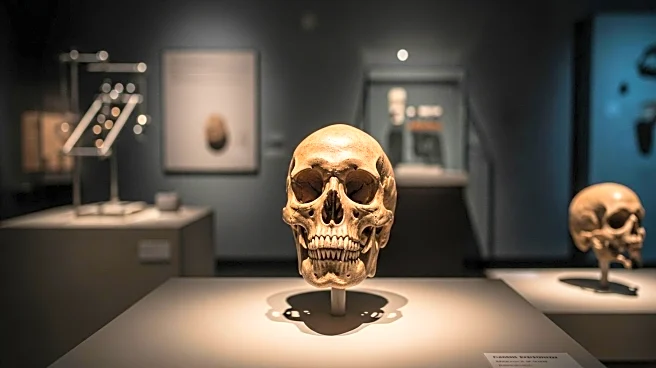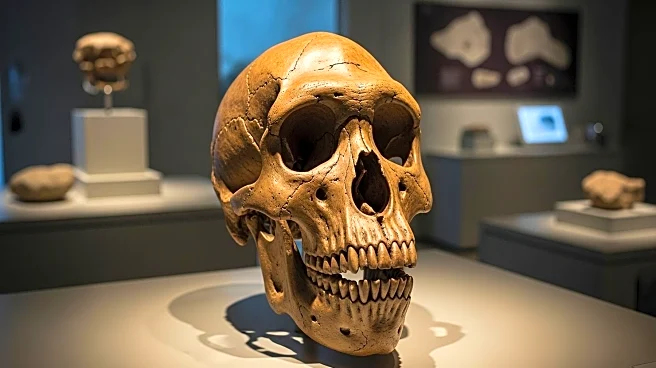What's Happening?
A skull discovered in central China, known as Yunxian 2, is challenging existing theories about human evolution. Initially found in 1990, the skull's distorted form made it difficult to classify. Recent digital reconstruction has revealed that it may represent a link between earlier and later human species, with features that do not fit neatly into any known category. The skull, dated between 940,000 and 1.1 million years old, suggests a possible connection to the 'longi clade,' a group that includes the Denisovans. This discovery implies that modern humans, Neanderthals, and Denisovans may have coexisted for up to 800,000 years, much longer than previously thought.
Why It's Important?
This finding has significant implications for our understanding of human evolution, suggesting that the divergence between modern humans and their closest relatives occurred much earlier than previously believed. It challenges the traditional view that Africa and Europe were the primary stages of human evolution, highlighting Asia's role in this process. The research underscores the complexity of human ancestry, which is not a linear progression but a branching network of interrelated species. This could lead to a reevaluation of the timeline and geographical context of human evolution, influencing future research and educational narratives.
What's Next?
The study opens new avenues for research into human evolution, particularly in Asia. Further excavations and technological advancements in digital reconstruction could uncover more fossils, potentially leading to new discoveries about early human species. The findings may prompt a reexamination of existing fossils and encourage interdisciplinary collaboration to refine the human evolutionary timeline. As the scientific community digests these results, debates and discussions are likely to continue, potentially reshaping our understanding of human history.

